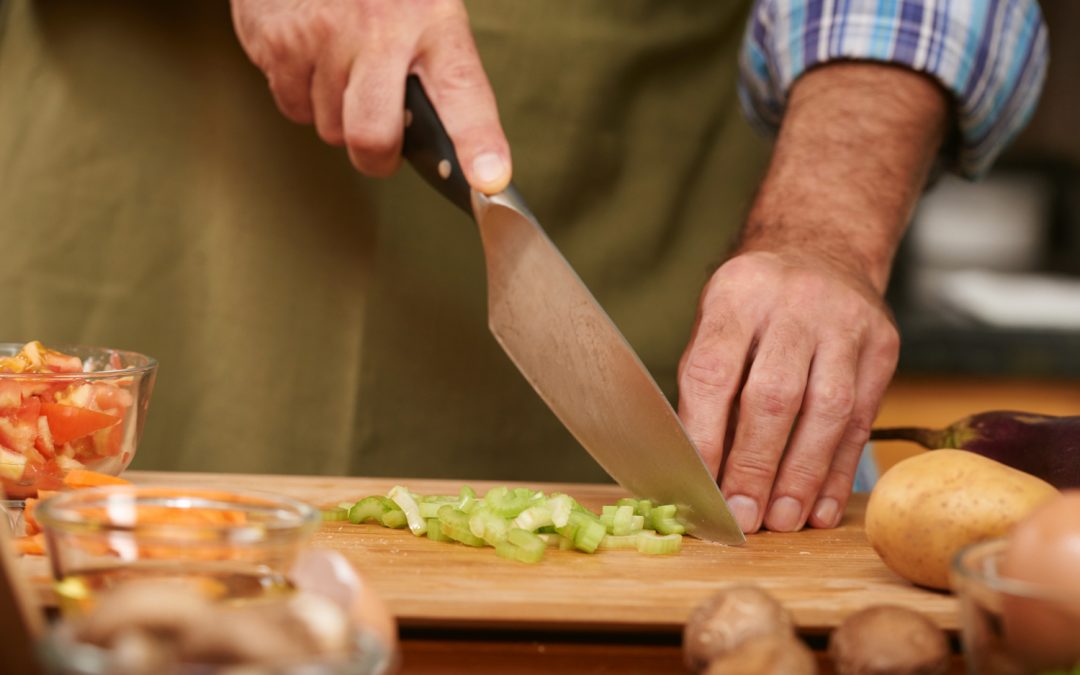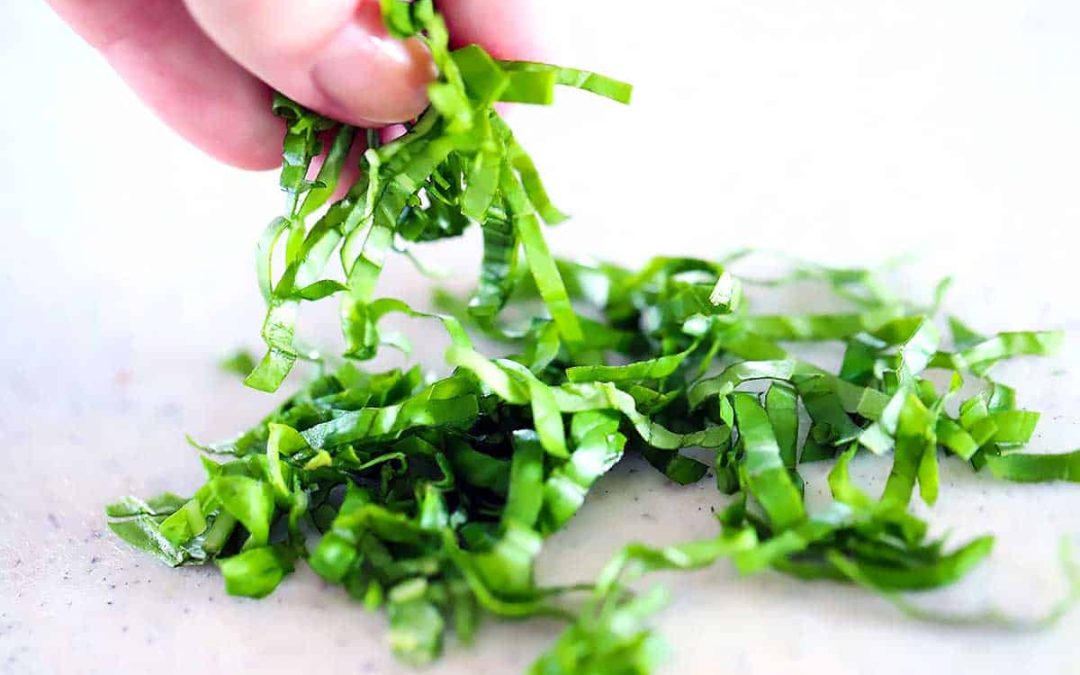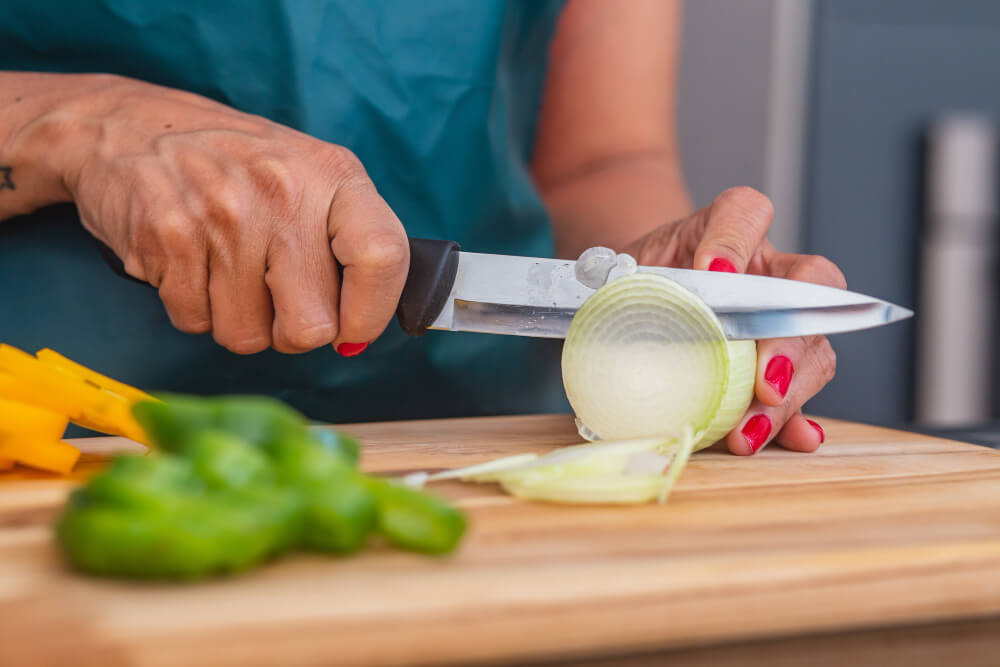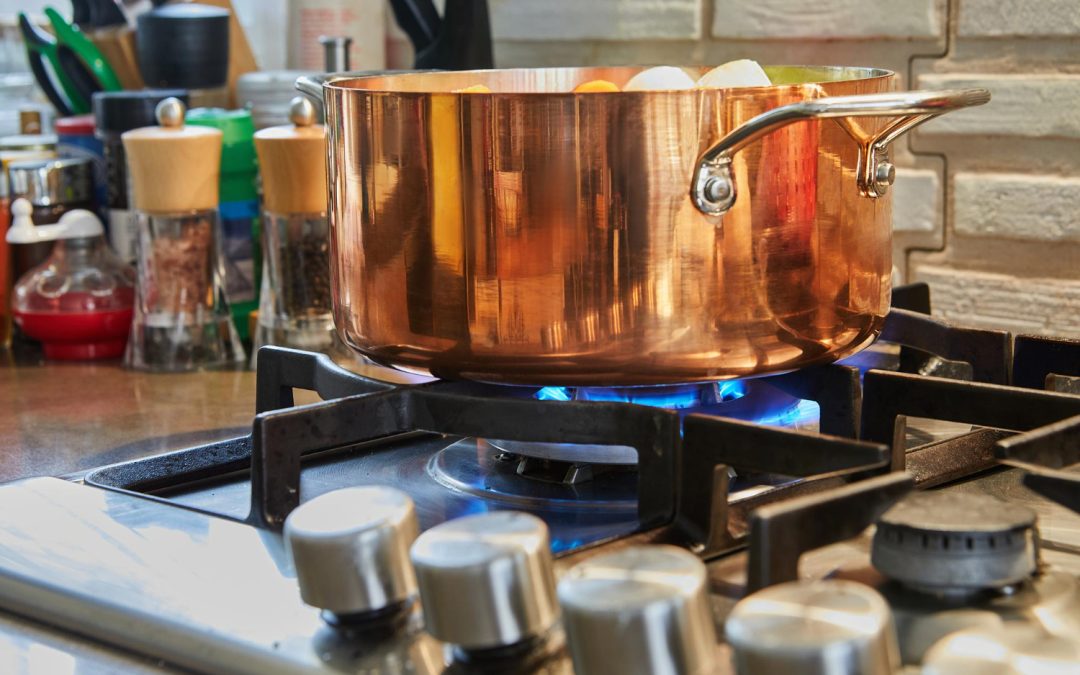Knife skills are at the heart of culinary expertise, and among them, chopping is a cornerstone. Whether you’re a seasoned chef or a novice in the kitchen, understanding the nuances of chopping is essential. In this comprehensive guide, we’ll take you through the intricacies of this essential knife technique. By the end, you’ll have the knowledge and confidence to chop like a pro.
Tools and Knives for Chopping
Before you embark on your journey to master the art of chopping, it’s essential to assemble the right tools—much like a painter selecting brushes or a sculptor choosing chisels. In the realm of culinary creation, your tools are your implements of precision and artistry. They include a solid, dependable cutting board, a well-crafted chef’s knife that feels like an extension of your hand, and, in some cases, a trusty vegetable peeler to streamline certain tasks. These humble yet vital instruments will be your partners in transforming raw ingredients into culinary works of art. In this section, we’ll delve into the importance of these tools and how they shape your culinary experience.
Cutting Board
Start with a stable, non-slip cutting board. Wooden and plastic cutting boards are popular choices, but ensure they’re easy to clean and maintain.
Chef’s Knife
The workhorse of the kitchen, a high-quality chef’s knife with a sharp blade is indispensable. The weight and balance should feel comfortable in your hand.
Vegetable Peeler (Optional)
Depending on your ingredients, a vegetable peeler can be helpful for tasks like peeling carrots or potatoes.
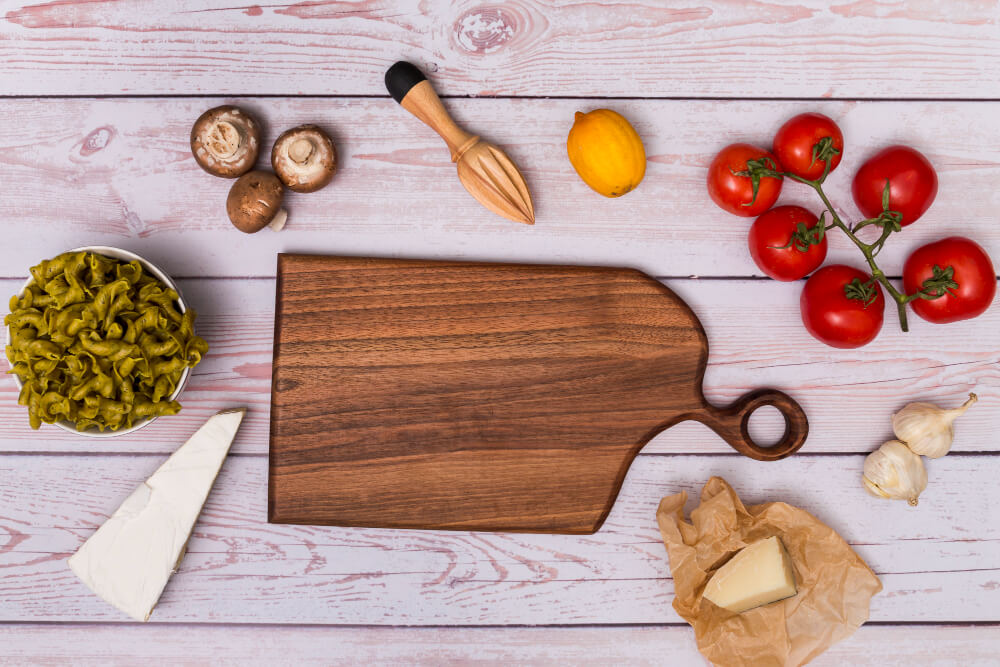
Proper Knife Grip and Positioning While Chopping Food
Understanding how to hold and position your knife is fundamental in mastering chopping techniques. Just as a musician must hold their instrument correctly, a chef’s ability to control the knife directly impacts their precision and safety. In this section, we’ll explore the practical aspects of holding your knife with the right grip and adopting the pinch grip technique. These techniques are essential for efficient and safe chopping, ensuring that you can handle your knife with confidence and precision in the kitchen.
- Hold the Knife Handle: Place your hand firmly on the handle of the knife, with your fingers wrapped around it. Your thumb and forefinger should form a secure grip.
- Pinch the Blade: To maximize control, pinch the blade just above the handle with your thumb and forefinger. This ‘pinch grip’ ensures stability and precision.
- Position Your Other Hand: When chopping, your non-dominant hand should be used to stabilize the ingredient. Curl your fingers inward and rest your knuckles against the flat side of the blade, guiding the knife as you chop.
Chopping Techniques for Different Ingredients
Chopping techniques vary depending on the ingredients you’re working with. Each food item has its unique texture and structure, requiring specific methods to achieve the desired results. In this section, we’ll dive into these practical chopping techniques, providing you with the knowledge and skills needed to tackle a wide array of ingredients effectively.
Vegetables
For most vegetables, start by slicing off one end to create a flat surface. Hold the vegetable steady with your non-dominant hand, and use a rocking motion to guide the knife blade through the vegetable.
Herbs
Delicate herbs like basil or parsley require a gentle touch. Bundle them together, tuck your fingers inward to create a claw shape, and use a slicing motion with your chef’s knife.
Meats
When chopping meats, it’s essential to have a sharp knife. Slice across the grain for tender cuts or against the grain for a finer texture.
Tips for Maintaining Safety When Chopping with a Knife
Safety is paramount when handling sharp knives. In this section, we’ll focus on practical safety measures to ensure that your chopping experience is accident-free. By following these straightforward guidelines, you can confidently navigate the kitchen while keeping your fingers and hands out of harm’s way.
- Keep Knives Sharp: A sharp knife is safer than a dull one. Regularly sharpen your knives to ensure they cut cleanly.
- Use a Stable Cutting Surface: Prevent accidents by working on a stable and slip-resistant cutting board.
- Mind Your Fingers: Always tuck your fingers under and away from the blade when chopping. The ‘claw’ hand position protects your fingertips.
- Store Knives Safely: Invest in knife storage options like knife blocks or magnetic strips to keep your knives secure and out of reach.
Common Mistakes to Avoid When Chopping with a Knife
Even the most skilled chefs can make mistakes when chopping. In this section, we’ll highlight these common errors and provide straightforward guidance on how to sidestep them. By recognizing and addressing these pitfalls, you’ll be better equipped to achieve consistent and safe chopping results in the kitchen.
- Using a Dull Knife: A dull knife can slip and cause accidents. Keep your knife sharp for precise cuts.
- Inconsistent Sizing: For even cooking, aim for uniform chop sizes. Practice your technique to achieve consistency.
- Not Stabilizing Ingredients: Failing to hold ingredients securely can lead to accidents. Always stabilize what you’re chopping.
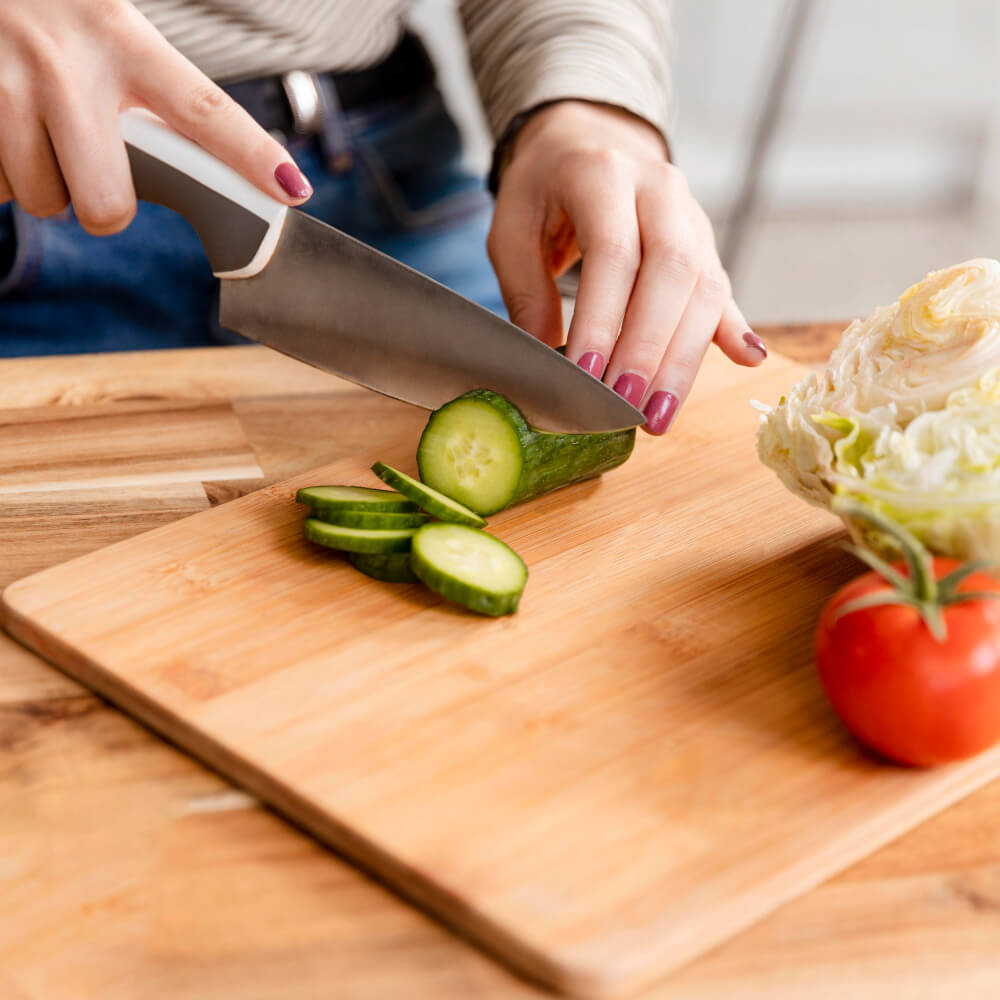
Recipe Ideas For Chopped Food
Now that you’ve honed your chopping skills, it’s time to put them to practical use. In this section, we’ll offer a selection of recipes that showcase the art of chopping. From savory stir-fries to refreshing salads, these dishes will allow you to apply your newfound expertise and elevate your culinary creations.
- Savory Stir-Fries: Master the art of chopping for stir-fries, where consistent cuts are key to quick and even cooking.
- Vibrant Salads: Elevate your salad game with finely chopped vegetables and herbs that enhance both taste and presentation.
- Hearty Soups and Stews: Perfect your chopping for hearty soups and stews, where uniform cuts contribute to balanced flavors and textures.
- Garnish Galore: Learn to create stunning garnishes, from intricate vegetable flowers to delicate herb confetti.
Wrapping up – How to Chop with a Knife
Chopping is more than just a cooking technique; it’s a culinary art form that can transform your dishes. By mastering this fundamental skill, you’ll not only enhance your efficiency in the kitchen but also elevate the aesthetics and flavors of your creations. So, with your chef’s knife in hand and newfound knowledge, embark on your journey to becoming a true chopping maestro. Happy chopping!

